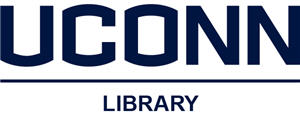Document Type
Article
Disciplines
Life Sciences
Abstract
The exploration of microbial communities by sequencing 16S rRNA genes has expanded with low-cost, high-throughput sequencing instruments. Illumina-based 16S rRNA gene sequencing has recently gained popularity over 454 pyrosequencing due to its lower costs, higher accuracy and greater throughput. Although recent reports suggest that Illumina and 454 pyrosequencing provide similar beta diversity measures, it remains to be demonstrated that pre-existing 454 pyrosequencing workflows can transfer directly from 454 to Illumina MiSeq sequencing by simply changing the sequencing adapters of the primers. In this study, we modified 454 pyrosequencing primers targeting the V4-V5 hyper-variable regions of the 16S rRNA gene to be compatible with Illumina sequencers. Microbial communities from cows, humans, leeches, mice, sewage, and termites and a mock community were analyzed by 454 and MiSeq sequencing of the V4-V5 region and MiSeq sequencing of the V4 region. Our analysis revealed that reference-based OTU clustering alone introduced biases compared to de novo clustering, preventing certain taxa from being observed in some samples. Based on this we devised and recommend an analysis pipeline that includes read merging, contaminant filtering, and reference-based clustering followed by de novo OTU clustering, which produces diversity measures consistent with de novo OTU clustering analysis. Low levels of dataset contamination with Illumina sequencing were discovered that could affect analyses that require highly sensitive approaches. While moving to Illumina-based sequencing platforms promises to provide deeper insights into the breadth and function of microbial diversity, our results show that care must be taken to ensure that sequencing and processing artifacts do not obscure true microbial diversity.
Recommended Citation
Nelson, Michael C.; Benjamino, Jacquelynn; and Graf, Joerg, "Analysis, Optimization and Verification of Illumina-Generated 16S rRNA Gene Amplicon Surveys" (2014). Open Access Author Fund Awardees' Articles. 26.
https://digitalcommons.lib.uconn.edu/libr_oa/26



Comments
Originally published in :
PLoS ONE 9(4): e94249. doi:10.1371/journal.pone.0094249
Copyright: 2014 Nelson et al. This is an open-access article distributed under the terms of the Creative Commons Attribution License, which permits unrestricted use, distribution, and reproduction in any medium, provided the original author and source are credited.